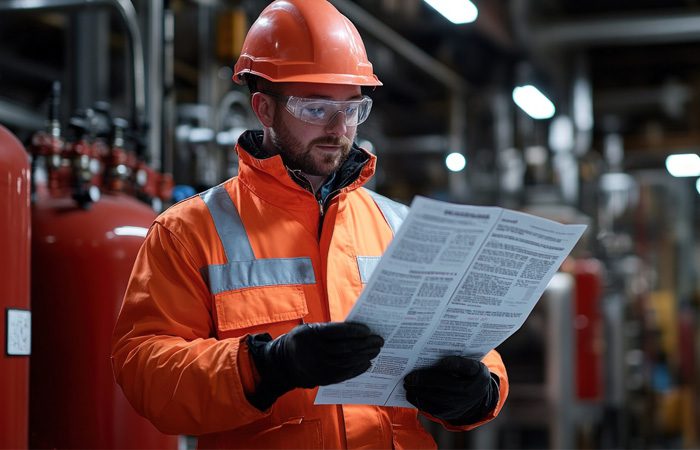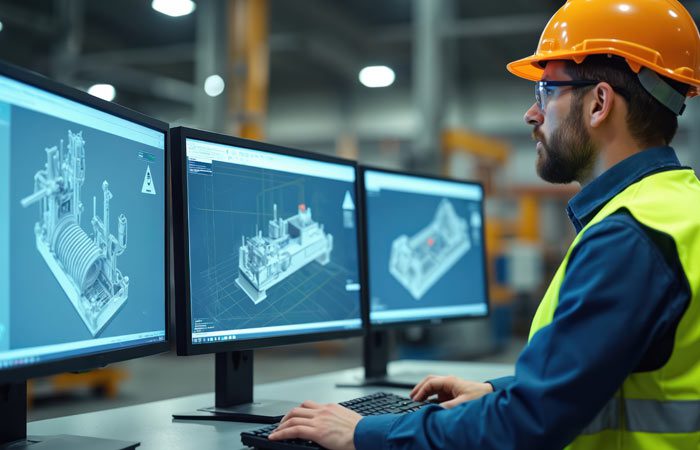
Fire Safety and Compliance: Engineering Challenges in Cabin Interior Materials
The interior of an aircraft is designed to be safe, comfortable, and compliant with rigorous regulations. Among these, aircraft cabin interior fire safety is one of the most critical priorities for aerospace engineers. A cabin fire, even if localized, can compromise passenger safety in seconds. As a result, strict global standards regulate the use of fire-resistant cabin materials for aviation, creating significant engineering challenges for design teams. Balancing compliance, safety, and passenger comfort has become a defining challenge in aerospace interior material engineering.
The Importance of Fire Safety in Aircraft Interiors
Fire hazards in aircraft interiors arise from multiple sources: electrical malfunctions, galley equipment, or even cabin lighting. To mitigate these risks, aircraft interior engineering compliance frameworks demand that every material used inside the cabin undergo aircraft interior fire resistance testing. From seat cushions and wall panels to carpeting and overhead bins, each component must meet stringent aviation cabin safety standards before certification.
FAA fire safety requirements for aircraft and EASA compliance for cabin materials dictate that materials must demonstrate not only fire resistance but also low smoke and heat emissions. This ensures passengers have time to evacuate in the event of an emergency.
Cabin Interior Materials Certification
Before entering service, all cabin materials undergo cabin interior materials certification. This involves a series of fire safety testing standards for aircraft interiors, which include:
- Flammability testing to measure ignition resistance
- Heat release testing to monitor energy produced during combustion
- Smoke density testing to measure visibility impact
- Toxicity assessments for gases released under fire conditions
These tests help address the growing concern around heat and smoke toxicity in aircraft interiors, which is often more dangerous than the flames themselves.
Challenges in Selecting Fire-Safe Materials
Design teams face several cabin interior safety engineering challenges while working with fire-safe materials. One of the biggest issues is the limited availability of materials that meet both safety and design requirements. For example, while flame-retardant materials in aviation provide excellent safety performance, they may compromise flexibility, weight efficiency, or passenger comfort.
Other challenges in selecting fire-safe aircraft cabin materials include:
- Higher production costs due to specialized materials
- Limited color, texture, and design options
- Difficulties in sourcing sustainable alternatives that meet safety requirements
This balancing act between performance and safety requires a combination of engineering innovation and deep knowledge of how aviation regulations impact cabin interior design.
Balancing Comfort and Compliance
Passengers expect comfort, luxury, and aesthetic appeal when flying. This creates a major challenge in balancing comfort and compliance in cabin interior design. Materials must not only meet strict FAA fire safety requirements for aircraft and EASA compliance for cabin materials, but they also need to be lightweight to reduce fuel consumption and strong enough to withstand repeated use.
For instance, seating fabrics must pass aircraft interior fire resistance testing while maintaining softness, durability, and design flexibility. Similarly, decorative laminates and panels must be stylish yet capable of meeting aviation cabin safety standards.
Engineering Sustainable Yet Fire-Resistant Materials
The aerospace industry is under pressure to adopt greener materials, but developing sustainable yet fire-resistant materials in cabin engineering is a challenge. Eco-friendly composites and natural fibers often fail stringent flammability and toxicity tests. This forces aerospace engineers to innovate with hybrid materials or advanced coatings that deliver both sustainability and safety.
A growing focus is on recyclable thermoplastics and low-toxicity composites that can pass fire safety testing standards for aircraft interiors. However, scaling such solutions while maintaining affordability remains a hurdle.
The Role of Regulations in Cabin Interior Design
Global aviation authorities have set rigorous benchmarks for aircraft cabin interior fire safety. The FAA fire safety requirements for aircraft focus on flame spread, smoke density, and heat release, while EASA compliance for cabin materials emphasizes harmonization across European carriers. These standards directly shape how engineers select and test materials.
Understanding how aviation regulations impact cabin interior design is essential for manufacturers. Non-compliance can result in costly delays, redesigns, or grounding of aircraft. At the same time, frequent updates to regulatory frameworks demand continuous innovation in aerospace interior material engineering.
Emerging Innovations in Fire Safety
To overcome cabin interior safety engineering challenges, research is advancing in several directions:
- Nanocomposite coatings that enhance fire resistance without adding weight
- New polymer blends that balance flexibility and flammability standards
- Advanced textiles with built-in flame-retardant properties
- Data-driven simulations to predict how materials perform under fire conditions
These innovations will help bridge the gap between aviation cabin safety standards and design aspirations.
Conclusion
Ensuring aircraft cabin interior fire safety is a complex task requiring strict adherence to global regulations, innovative material development, and a constant focus on passenger well-being. From fire-resistant cabin materials for aviation and cabin interior materials certification to addressing heat and smoke toxicity in aircraft interiors, engineers face multiple challenges.
The journey toward safer, more sustainable cabins includes developing sustainable yet fire-resistant materials in cabin engineering, navigating aircraft interior engineering compliance, and balancing comfort with safety. As technology advances, the industry will continue to evolve with better solutions, making cabins not only more comfortable but also more resilient.
For companies such as TAAL Tech, working at the intersection of compliance and innovation in aerospace interior material engineering means addressing these challenges head-on. Their expertise ensures that future aircraft cabins meet the dual goals of safety and passenger satisfaction.


